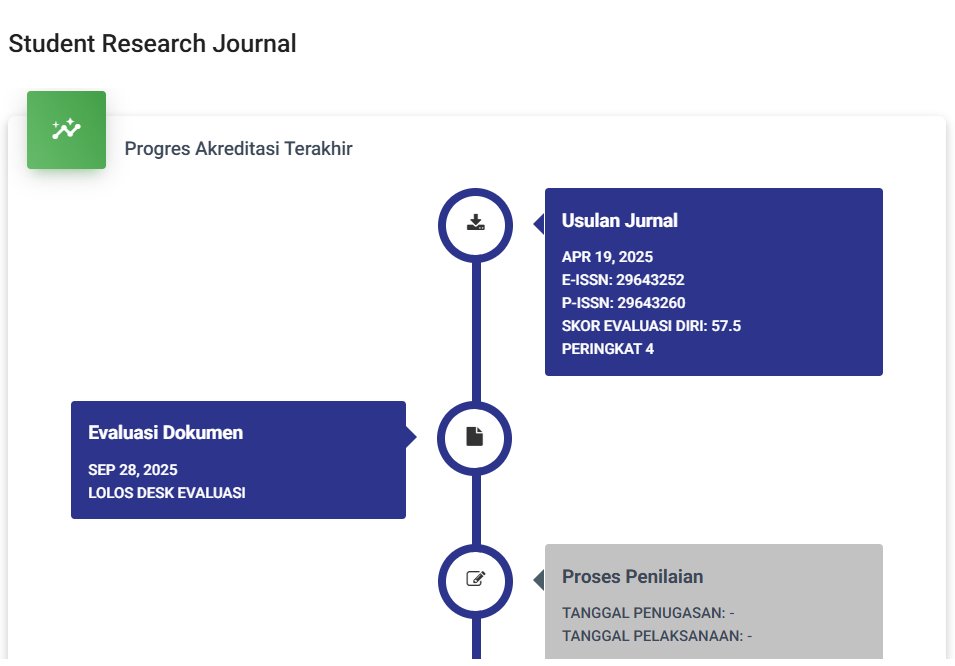Pengaruh Motivasi Langsung Dan Tidak Langsung Terhadap Kinerja Pegawai Pada Dinas Kelautan Dan Perikanan Kabupaten Paser
DOI:
https://doi.org/10.55606/sjryappi.v1i1.165Keywords:
Direct Motivation, Indirect Motivation, Performance.Abstract
The formulation of the problem in writing this thesis is: is there a direct and indirect motivational effect on the performance of employees at the Maritime Affairs and Fisheries Service in Paser Regency. And which variable among the direct and indirect motivational variables has the dominant influence on employee performance. The benefit to be achieved in this research is that it can be used to improve the performance of civil servants in the future.
From the results of multiple linear regression analysis, we get the function equation Y = 0.607+0.466X1+0.330X2. From these results it can be seen that the motivational variable has a positive effect on employee performance at the Maritime Affairs and Fisheries Office of Paser Regency. This effect is also explained by the R2 value (coefficient of determination) of 0.325, which means that the variables studied have an effect of 32.5% and the remaining 67.5% is influenced by other variables not included in this study. The regression coefficient (R), which describes the strong relationship between the independent variables and the dependent variable can be seen in the test, which is equal to 0.594. This means that there is a moderate relationship between the independent variables and the dependent variable. Fcount value ˃ Ftable or 12.818 ˃ 3.1951 and probability value 0.000 ˂ 0.05. Shows that direct and indirect motivational variables have a simultaneous (together) effect on employee performance. Of the direct and indirect motivational variables, the direct variable has a dominant influence, this is evidenced by the value of tcount ˃ ttable or 3.3777 ˃ 1.6779 and the smallest probability value of 0.001 ˂ 0.05
Seeing the results of the discussion above, it is concluded that the initial hypothesis proposed is accepted, because the initial hypothesis states that the dominant variable is direct motivation variable (X1).
References
Algifari. 1997. Statistika Ekonomi. STIE YKPN. Yogyakarta
Dessler, Gary. Human Resources Management. Eight Editions. Prentice Hall. New Jersey
Gomes C Faustino. 2001. Behavior Ini Organizational Sixth Edition. Prentice Hall International Inc. New Jersey
Handoko T Hani. 1999. Manajemen Personalia dan Sumber Daya Manusia. STIE YKPN. Yogyakarta
Hasibuan Malayu SP. 2001. Manajemen Sumber Daya Manusia. PT Bumi Aksara. Jakarta
. 2003. Manajemen Sumber Daya Manusia. Edisi Revisi. Cetakan Keempat. PT Bumi Aksara. Jakarta
Hariandja, Marihot Tua Effendi. 2002. Manajemen Personalia dan Sumber Daya Manusia. BPFE. Yogyakarta
Mangkunegara, Anwar Prabu. 2011. Manajemen Sumber Daya Manusia Perusahaan. Cetakan kesepuluh. PT Remaja Rosdakarya. Jakarta
Nawawi, Hamdani. 1997. Manajemen Personalia (MSDM). Edisi Ketiga. Ghalia Indonesia. Jakarta
Oemar, Hamalik. 2001. Manajemen Pelatihan Ketenagakerjaan. Cetakan Kedua. PT Bumi Aksara. Jakarta
Ranupandojo, Heidjarchman dan Suad Husnan. 2000. Manajemen Sumber Daya Manusia I. Cetakan Kedua. Universitas Terbuka. Jakarta
Srimulyo, Koko. 1999. Penilaian Kinerja. Andi Offset. Yogyakarta
Simamora, Henry. 1999. Manajemen Sumber Daya Manusia. Edisi Ke-2. STIE YKPN. Jakarta
. 2001. Manajemen Sumber Daya Manusia. STIE YKPN. Medan
Sutrisno, Hadi. 2001. Analisis Regresi. Andi Offset. Yogyakarta
Siagian, Sondang P. 2002. Manajemen Sumber Daya Manusia. PT Bumi Aksara. Jakarta
Sugiyono. 2003. Metode Penelitian Bisnis. Alfabeta. Bandung
Soeprihanto, dkk. 2003. Perilaku Organisasional. STIE YKPN. Yogyakarta
Siswanto, HB. 2005. Pengantar Manajemen. PT Bumi Aksara. Jakarta
Simanjuntak, Payaman J. Pengantar Ekonomi Sumber Daya Manusia. LPFE-UI. Jakarta
Timpe, Dale A. 2002. Seri Manajemen Sumber Daya Manusia Memotivasi Pegawai. PT Elek Media Komputindo. Jakarta
Umar, Husain. 1998. Riset Sumber Daya Manusia Dalam Organisasi. PT Gramedia Pustaka Utama. Jakarta








